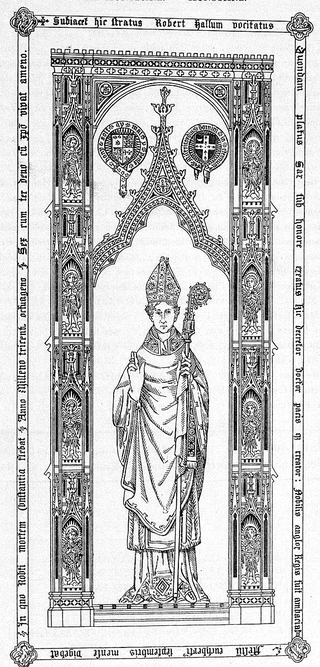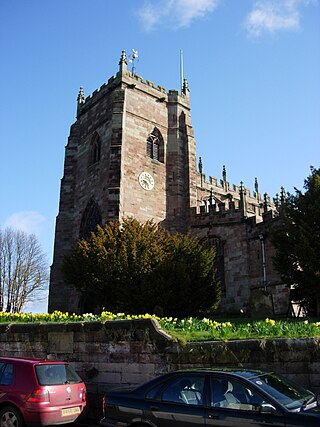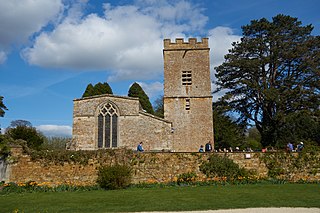Related Research Articles

Henry VII was King of England and Lord of Ireland from his seizure of the crown on 22 August 1485 until his death in 1509. He was the first monarch of the House of Tudor.

Otto IV was the Holy Roman Emperor from 1209 until his death in 1218.

Henry VI was King of England from 1422 to 1461 and again from 1470 to 1471, and disputed King of France from 1422 to 1453. The only child of Henry V, he succeeded to the English throne upon his father's death, at the age of eight months; and succeeded to the French throne on the death of his maternal grandfather, Charles VI, shortly afterwards.

Henry IV, also known as Henry Bolingbroke, was King of England from 1399 to 1413. Henry was the son of John of Gaunt, Duke of Lancaster, himself the son of Edward III, and Blanche of Lancaster.

Margaret Tudor was Queen of Scotland from 1503 until 1513 by marriage to King James IV. She then served as regent of Scotland during her son's minority, and fought to extend her regency. Margaret was the eldest daughter and second child of King Henry VII of England and Elizabeth of York, and the elder sister of King Henry VIII of England. By her line, the House of Stuart eventually acceded to the throne of England and Ireland, in addition to Scotland.

Margaret Plantagenet, Countess of Salisbury, was the only surviving daughter of George Plantagenet, Duke of Clarence, by his wife Isabel Neville. As a result of Margaret's marriage to Richard Pole, she was also known as Margaret Pole. She was one of just two women in 16th-century England to be a peeress in her own right without a husband in the House of Lords.

Robert Hallam was an English churchman, Bishop of Salisbury and English representative at the Council of Constance. He was Chancellor of the University of Oxford from 1403 to 1405.

Sir Walter Mildmay was a statesman who served as Chancellor of the Exchequer to Queen Elizabeth I, and founded Emmanuel College, Cambridge.

Sir Frank Athelstane Swettenham was a British colonial administrator who became the first Resident general of the Federated Malay States, which brought the Malay states of Selangor, Perak, Negeri Sembilan and Pahang together under the administration of a Resident-General based in Kuala Lumpur. He served from 1 July 1896 to 4 November 1901. He was also an amateur painter, photographer and antique collector.

Ranulf de Blondeville, 6th Earl of Chester and 1st Earl of Lincoln, known in some references as the 4th Earl of Chester, was one of the "old school" of Anglo-Norman barons whose loyalty to the Angevin dynasty was consistent but contingent on the receipt of lucrative favours. He has been described as "almost the last relic of the great feudal aristocracy of the Conquest".

Malpas is a market town and a civil parish in the unitary authority of Cheshire West and Chester and the ceremonial county of Cheshire, England. It lies near the borders with Shropshire and Wales, and had a population of 1,673 at the 2011 census.

John Waltham was a priest and high-ranking government official in England in the 14th century. He held a number of ecclesiastical and civic positions during the reigns of King Edward III and Richard II, eventually rising to become Lord High Treasurer, Lord Privy Seal of England and Bishop of Salisbury. He is buried in Westminster Abbey, London.

The Court of the Council in the Dominion and Principality of Wales, and the Marches of the same, commonly called the Council of Wales and the Marches or the Council of the Marches, was a regional administrative body founded in Shrewsbury.
Richard Harliston, became a yeoman of the king's chamber on the accession of Edward IV. He was made vice-admiral, in which capacity he came to Guernsey.
The Standard Bearer of England was once an important office within the English army, especially during the times when Kings were still present on the battlefield. As standard-bearer Henry de Essex was greatly chastised when he threw down the English Standard and claimed his King (Stephen) was dead in 1153.

The Glyndŵr rebellion was a Welsh rebellion led by Owain Glyndŵr against the Kingdom of England during the Late Middle Ages. During the rebellion's height between 1403 and 1406, Owain exercised control over the majority of Wales after capturing several of the most powerful English castles in the country, and formed a parliament at Machynlleth. The revolt was the last major manifestation of a Welsh independence before the annexation of Wales into England in 1543.
Richard le Scrope was an English cleric who served as Bishop of Coventry and Lichfield and Archbishop of York and was executed in 1405 for his participation in the Northern Rising against King Henry IV.
Sir William Fitzwilliam was a Merchant Taylor, Sheriff of London, servant of Cardinal Wolsey, and a member of the council of Henry VII.

The Church of St Mary the Virgin is the Church of England parish church of Chastleton, Oxfordshire, England. It is a parish church in the parish of Little Compton, along with those of Cornwell, Daylesford and Little Rollright. The parish is part of the Team Benefice of Chipping Norton, along with the parishes of Chipping Norton with Over Norton, Churchill and Kingham. The Benefice of Chipping Norton is part of the Diocese of Oxford.

Sir Richard Clement of Ightham Mote in Kent, England, was a courtier to King Henry VII and to his son Henry VIII.
References
- ↑ James L. Gillespie (1984). "Matthew Swettenham, Ricardian profiteer" (PDF). Transactions of the Historic Society of Lancashire and Cheshire. 133: 133–138.
- ↑ Catalogue of Rubbings of Brasses and Incised slabs. Victoria and Albert Museum: HMSO I(nternet Archive). 1929. p. Plate 17. ISBN 978-0-11-290087-0 . Retrieved 29 February 2024.
- ↑ Barlow, Henry S. (1995). Swettenham. Kuala Lumpur: Southdene. pp. 1–2.